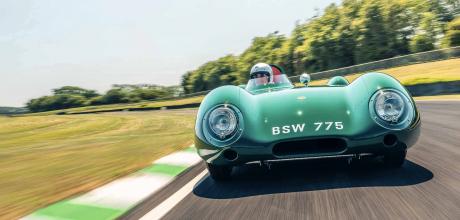1957 Lotus Eleven S2
Fresh from restoration and wearing its seventh different primary colour, this Lotus Eleven S2 is the ideal Goodwood weapon, says James Elliott.
Photography Jonathan Fleetwood
Rainbow WarriorLOTUS ELEVEN
Restoration returns a road-racer to glory
Weighing in at less than half a tonne (officially), propelled by a repurposed lightweight off-the-shelf firepump engine and clothed in a ground-hugging, air-cheating body from master aerodynamicist Frank Costin, in the entire history of Lotus it’s the Eleven that has best encapsulated the Chapman mantra of simplify, then add lightness’. Maybe the 25 took it to an even higher level, but...
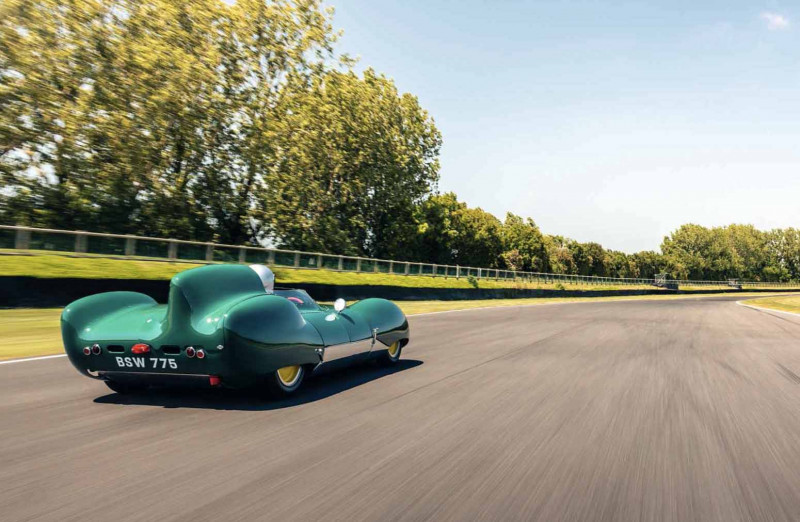
The Eleven’s success is reflected in the fact that some 270 were made, which was a huge number of top-tier sports racers to shift (largely for privateers) in just a couple of years towards the end of the 1950s — when Lotus was still finding its feet. That, in part, is due to the fact that simple’ did not mean old tech’. Quite the opposite. The Eleven was the first of Lotus’s sports-racers to be new from the ground up, previous efforts having used the MkVI as a base, though one MkIX (‘XPE 6’) was a clear missing link.
‘Show the little Lotus a straight such as Lavant and it will arrow up to 120mph as steady as a rock’
The Eleven started with a very lightweight steel tubular chassis (701b) made up of 1in and 34in tubes and constructed by Progress Chassis Co, clothed in Costin’s slippery bonnet, hand-beaten in aluminium by the artists at Williams & Pritchard. Installed in the front was Wally Hassan and Harry Mundy’s equally slender all-aluminium overhead-cam 1098cc Coventry Climax FWA (and, towards the end, the 1468cc FWB), which offered an exemplary power-to- weight ratio. Dunlop/Girling disc brakes all round provided ample stoppage, while rack-and-pinion steering was a huge upgrade. There really wasn’t a lot more to it.
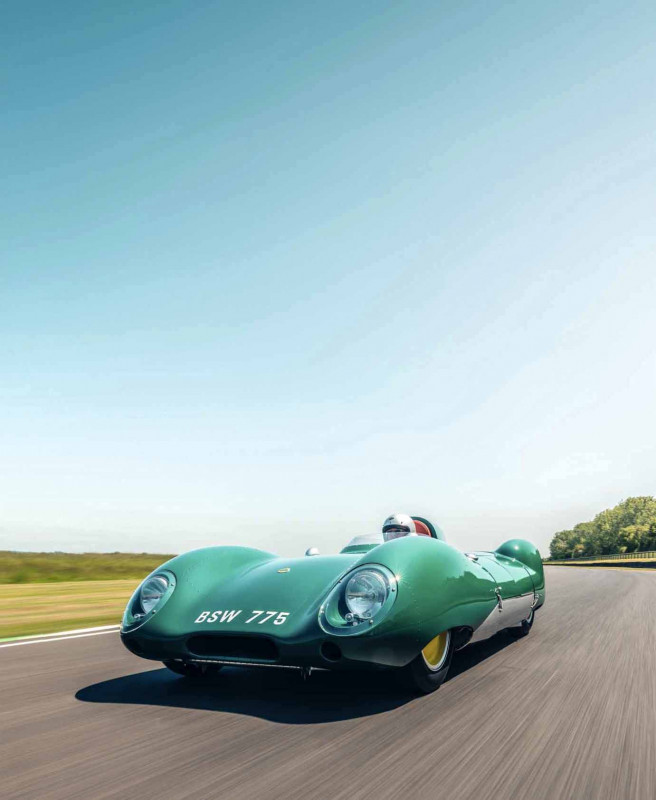
Lotus, still working at that stage out of a unit at Tottenham Lane in Hornsey, North London, offered three versions: the £969 (as a kit) Club with 1098cc Coventry Climax, Austin live rear axle and drum brakes; Sports (£750), which was a Club with an 1172cc Ford sidevalve engine; or the range-topping £1230 Le Mans with de Dion rear and all-round disc brakes, and engine options that would range from 750cc to 1500cc. The antiquarian swing-axle front suspension was replaced with double A-arm/wishbones about halfway through production with the introduction of the Series 2. Available as a kit or assembled, it was marketed as roadgoing from the outset.
‘The Eleven was the first of Lotus’s sports-racers to be new from the ground up’
The press loved it. The Autocar’s road test from 30 November 1956 decreed: Although it is so light the Lotus clings to the road in a remarkable manner… a driver can cause or experience skids and then correct them as easily as can a man on skates. The response to movement of the steering wheel is instantaneous. On comers there is no roll at all, nor is there any tyre scream.’

Works drivers and privateers were similarly enthusiastic, with the Eleven clocking up close to 150 victories in its first season, ranging from Class G (1100cc sports cars) right up to 2.0 litres. Its most remarkable achievement was seventh overall at Le Mans from a piddling 1098cc versus the might of big-bore Jaguars, Astons and Ferraris, in the hands of Reg Bicknell and Peter Jopp. For the sake of full disclosure, and to emphasise the growing importance of aerodynamics, it is worth bearing in mind that the ninth to eleventh spots that year were filled by 747cc DB-Panhards.
The following year, Elevens took a class win at Sebring (with Chapman himself and Joe Sheppard) and again starred at Le Mans, scoring class wins for both 1100cc and 750cc variants, the latter, driven by Cliff Allison and Keith Hall, also winning the Index of Performance. To this day Elevens are a force to be reckoned with in historic racing, still punching well above their weight.
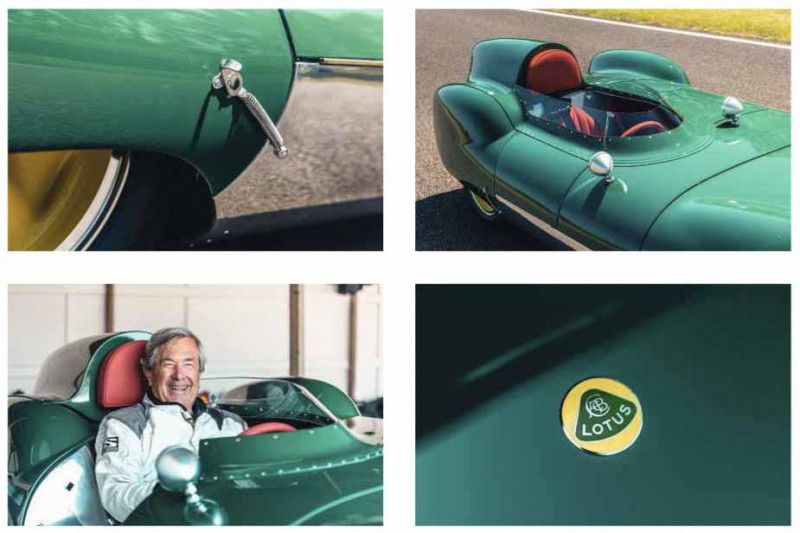
This is chassis 313. Like most Elevens, it’s led a colourful life. One of the 104 S2s built, it was created as a Le Mans- spec car with close-ratio Austin A30 box, FWA engine (no. 7206) and ‘wobbly web’ wheels. It was road-registered — BSW 775 — shortly after its birth in November 1957 and raced pretty much continuously for more than half a century. The first owner, when it was blue, was Jack Slater of Dumfries, who competed in it frequently before selling on to another clubman, Phil Barak of Whitley Bay, in 1960. It then moved to Liverpool, first with Peter Cotterill in 1962 and then Arthur Howarth two years later, by which time it was red. Howarth sold it on after just one year to Derek Arnott of Middlesbrough, whose two-year tenure ended with the sale to Ollie Thatcher, who kept it for barely a year before Kentbased Barry Adams snapped it up for £180 in 1968 and used it as a road car before trading it in for an Elite with Alan Brownlee in 1972. By then it was powered by FWA no. 6895 and fitted with a long-range tank.
‘Some 3000 man-hours later, 313 is making its post-restoration debut on the sort of Goodwood day that Roy Salvadori waxed lyrical about'
It changed hands again, this time for a heady £1500 in 1976, when bought by cardiologist, collector and historic racer Bryn Williams, swiftly undergoing another colour change (from yellow to black this time) and a bare chassis restoration by Bill Friend. That was followed by Williams & Pritchard carrying out chassis tube repairs and supplying a new 18-gauge aluminium body, plus a respray, this time to Rolls-Royce Regal Red. It became a regular competitor for more than 40 years with two generations of the Williams clan (a crash at Donington resulted in an inevitable colour change, this time to Fiat Verde Scuro), and in 2007 the FWA was removed (though retained) and it acquired a 1500cc FWB.
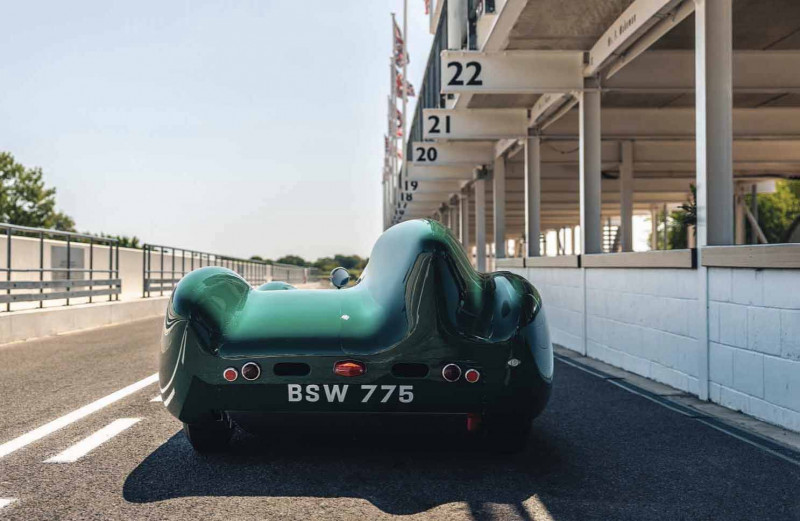
In 2019 the Eleven was put on the market by Gareth Williams via William I Anson and bought by American architect David Martin. If that name is familiar, it is because we featured the California skyscraper king’s award-winning hot-rod (officially Americas Most Beautiful Roadster 2018). A Lotus Eleven couldn’t be a more different kettle of fish from a 657lee, 500bhp Chevy V8-powered ’32 Roadster, so what was the appeal? ‘When I was a kid in California there was an early issue of Road & Track with a Lotus Eleven on the cover and I fell in love with it and the philosophy behind it,’ he explains. ‘It’s just one of the most gorgeous pieces of industrial design I’ve ever seen. This one is the Mk2 body, so the most streamlined, and it had a wonderful history — not a famous international history, but a continuous one with good people and many years with the Williams family.’
‘With the passenger side blanked off and the single Perspex screen, the cockpit is tricky to enter and on the snug side of confined’
The car was found, inspected and subsequently restored for Martin by Laurence Gould of ADP Classic Racing. The two met when Martin ran a 1953 Alfa Romeo Sprint Touring Coupe, acquired from JD Classics, on the Mille Miglia and Laurence was part of the support crew. After JD went pop, Laurence and Jake Dale were mid-way through setting up on their own in 2019 when they met Nigel Lempriere (see Day in the Life), CEO of ADP, who persuaded them to join the group. ADP is now the Tecniq group, which works exclusively on hypercar programmes with some of the world’s top marques such as Mercedes-AMG, McLaren, Aston Martin and Hennessy. ADP Classic Racing has thrived along with it — now employing 11 full-time staff and generally working on six cars at a time, including a couple of restorations and a lot of racing — and makes good use of its parent company’s state- of-the-art facilities, as we shall see.
Laurence says: ‘We saw one car in Germany for David and another in the UK, but it was the history of this one that appealed most. He bought it in late 2019 and our mission was to renew its papers and get it prepped for the 2020 Monaco Histories for Chris Ward to drive, then Covid came along and that was that. We knew work needed to be done on it so we started on that and, of course, it snowballed.’ There was a load of chassis work and new ally panelling, though none on the sacrosanct body, which was famously the last shaped by the old master Len Pritchard himself.
After some 3000 man-hours by Laurence, his father James and the team, 313 is making its post-restoration debut on the sort of Goodwood day that Roy Salvadori waxed lyrical about, the owner taking it out on the jovial Classics on Track for Charity trackday, Drives.Today graciously accorded the lunchbreak for photography and a few laps. David Martin, seeing his car for the first time in the metal, is delighted: ‘It took four or five years to get to where it is today, but the world has not been a normal place for the past four or five years. It’s the first time I’ve ever driven one and you can instantly see why people think they are so special, but what jumped out at me was the detailing: it really seemed to pop.’
As a lifelong Lotus and Goodwood fan myself, it is difficult not to be overwhelmed by the occasion, even seeing the car glinting in the light while stationary in the pitlane. With those front and rear clamshells open, everything is visible and, more importantly, accessible. There is a serious engineering reason for them after Lotus’s earlier riveted- shut sports racers; even the centre section can be removed by undoing just six screws.
The little FWB four-pot wears the prettiest badge and script of any engine, flanked by a pair of Weber 40DC03s. In the details, such as the Castrol caps on the wheels and the mirrors, you can see the benefits of an old-car specialist like ADP being part of a cutting-edge group. You simply can t get original Raydyot mirrors anymore, but if you have the facilities you can buy unmarked replicas and perfectly etch in the logos. The body is being 3D scanned, too.
With the passenger side blanked off and the single Perspex screen, the cockpit is tricky to enter and on the snug side of confined. The speedo is hidden under the cover so you have only the revs and oil pressure to guide you; Elevens shouldn’t get hot. Fire it up and, as it gobbles away, all that is forgiven. What at first feels suffocating is soon just a second skin. The clutch is very sharp, and the ZF gearbox that this car has raced with for decades feels very tight and short in throw via the stubby billet gearlever.
Now, sitting low, curving your foot around the steering column to work the clutch, heel-and-toeing across the narrow gap between brake and throttle, revs and cacophony rising, wind rushing your face, it feels like a race car. Under half a tonne? Probably not, it feels more like 600-650kg, but it is plenty quick enough thanks to a racing engine and not- too-extreme fast road cam. 120bhp and 110lb ft are the numbers, almost as big as the turning circle!
These aperitifs are tasty but in no way prepare you for what happens in corners. Hugging the ground (the scuttle is barely 2ft off it), it responds to inputs instantaneously and immaculately. The steering is never more or less than fingertip light, the handling and roadholding are sensational and cornering poise is phenomenal, the limited-slip diff helping you exit with similar neat poise. Possibly more remarkable, if you show the little Lotus a straight such as Lavant it will arrow up to 120mph as steady as a rock.
Balance is everything and this car has it in spades, in the design, the rebuild and the set-up. And it is all the better for running on skinny tyres that communicate every sensation and obey every command in the dry.
After Drives.Today drove this Eleven at Goodwood, it went out to the fast-growing International St Moritz Automobile Week where it competed in the airstrip sprint Kilometre Lance, a road rally plus the showpiece Bernina Gran Turismo — 3.4 miles climbing 500m via 50 tight corners and hairpins — and came away with the Driven by Design award judged by a panel of notables including ex-Porsche man Tony Hatter. A fitting accolade to a fantastic restoration that is now settling into its new home in Santa Monica, USA. To finally rest? Not a bit of it: ‘The hills above Malibu are way too fun to drive not to use this car on them.’
THANKS TO Goodwood Motor Circuit and Classics on Track for Children, a 105dB charity trackday conceived by Paul Auston, 'Spike' Milligan and the late Al Peel, which, since its first Goodwood event in 2014, has raised well over £100,000 for Her Grace the Duchess of Richmond and Gordons chosen childrens charities in West Sussex. See classicsontrackforchildren.com.
Right The immaculately restored engine bay. This Eleven runs the later, larger- capacity FWB Coventry Climax engine, but retains its original. It is fed by a pair of Weber 40DCO3s.
This page, clockwise, from top left Access to mechanicals was made as easy as possible; like piloting a missile; evocative Lotus badge; Martin seeing his car for the first time.


